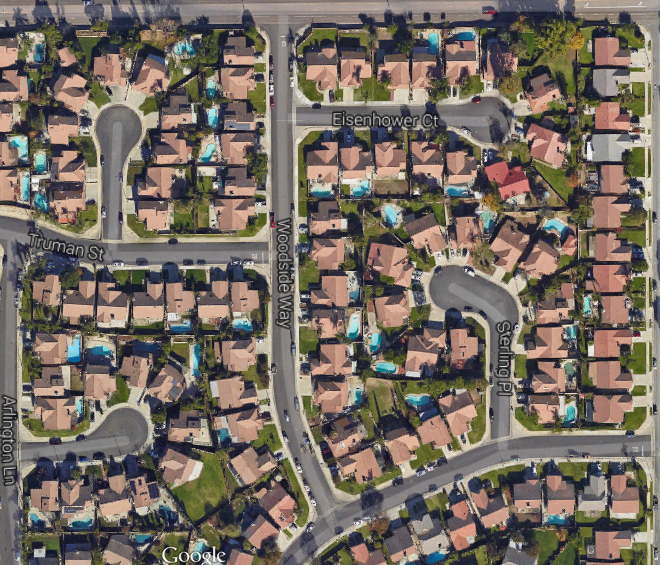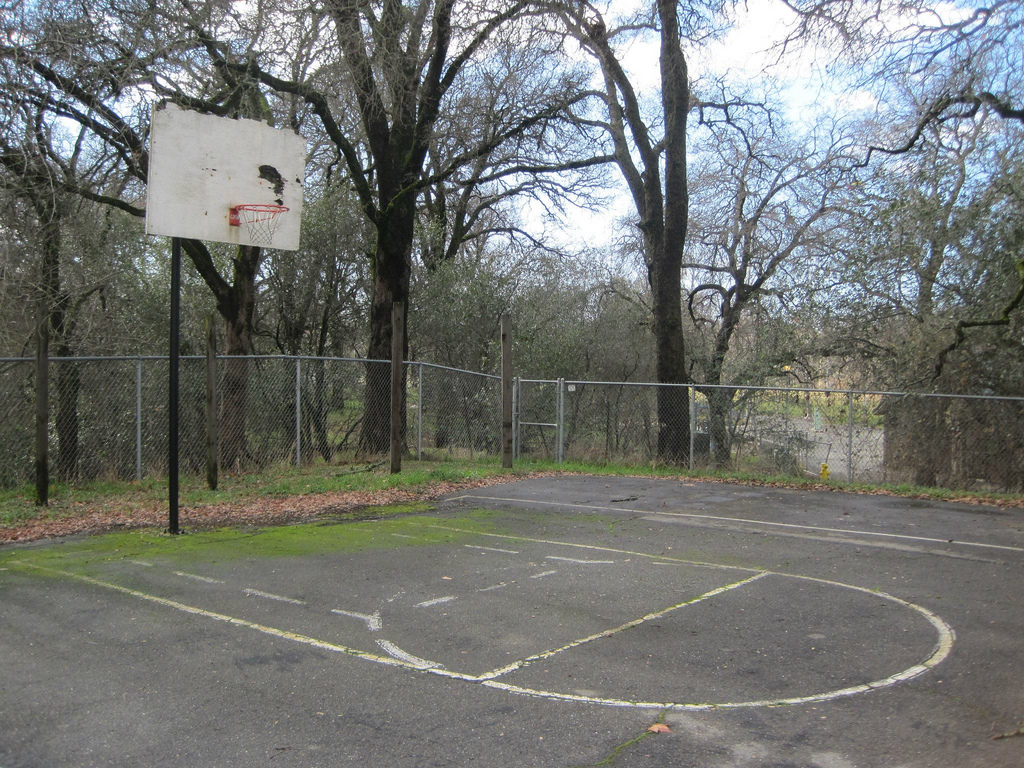In our CityReport, Less in Common, we explored a key symptom of the decline in social capital: Americans seem to be spending less time playing together. One major driver of this trend is a dramatic privatization of leisure space. Instead of getting together in public parks and pools (or just playing in the street), more of our recreation takes place in private backyards, private pools, and private gyms. Prior to World War II, for example, there were fewer than 2,500 homes in the US with in-ground private pools. Today, there are more than five million.

While that may not seem like a big deal – isn’t it a good thing if people can swim in their own backyards? – pools are a particularly good example of the ways that the privatization of leisure space is tied up with the history of sprawl and racial segregation. When prohibiting black swimmers from enjoying public pools became illegal, many of them lost all or nearly all of their white patrons, or simply shut down. Their replacements sprouted in places where exclusion was easier: behind the fences of private yards or gated communities. The stakes were demonstrated as recently as last week, when white residents of a gated community in McKinney, Texas objected to black residents and their friends in their community pool. The police officers who showed up handcuffed, manhandled, and pulled a gun on the unarmed teens – many, if not all, of whom had a right to be there – all in the name of keeping their pool exclusive.
And what’s true of swimming pools is true of many other kinds of recreation: we’re spending more time playing apart in private places than playing together in public ones. For example, while regular exercise has become an important priority for many Americans, we increasingly exercise in private facilities, rather than public parks or community centers. The membership of private gyms has increased from 13 million in 1980 to more than 50 million today. While It’s great that more people are working out, the membership of private gyms skews heavily towards younger, wealthier and better educated demographics.
Moreover, the pattern of privatized recreation starts at an early age. Opportunities for children to serendipitously engage in unstructured (and largely unsupervised) play have diminished.
One of the iconic images of recreation in the U.S. is the pickup game, whether it’s half-court hoops on a public playground, or baseball in the proverbial sandlot, or soccer on a grassy field. Whoever shows up can play, and the games have their own, largely self-organizing and self-regulating character. While there’s no published data on this kind of informal activity,the privatization of recreational space means these games are harder and harder to play – and when they do happen, the players are more likely to be of the same racial or economic background. Even participation in organized sports has been in decline. The number of 6- to 17-year olds participating in the four most popular team sports – baseball, basketball, football and soccer – has declined 4 percent nationally in the past five years.

More generally, it has become increasingly rare for younger children to walk or cycle away from their homes and away from constant parental supervision. The few parents who promote greater independence are treated as eccentric for raising “free range kids.” Recently, in the suburbs of Washington DC, parents were taken to court for letting their children ages 6 and 10, walk three blocks to a local park unaccompanied. The combination of physical distance and paranoia limit the amount of time kids spend unsupervised in the public realm.
And helicopter parents don’t have helicopters – they rely on SUVs to haul children from place to place. The result is that parents spent a not inconsiderable amount of time and money transporting children to and from school, play dates and other social activities – the kinds of trips that in earlier times (and denser communities) kids could have taken on their own. Todd Litman estimates the “chauffeuring burden” accounts for between 5 and 15 percent of all vehicle travel, and imposes costs greater than the high end estimates of congestion time loss. Plus, the added time spent traveling in private cars is time spent cocooned in a vehicle, out of the public realm.
In sprawling suburbs, the closest park or schoolyard may be too far away to walk or bike. The tendency toward building larger elementary and secondary schools, coupled with lower residential densities means schools are further from the average household (even though they may have ample open space).
The average size of an elementary school has increased about 20 percent in the past two decades, chiefly as older, smaller schools are closed, and newer schools tend to be larger.
In 1982 the average elementary school had 399 students, but by 2010 had grown to 470.
This pattern has been reinforced by policies that make it hard to retain or renovate small schools, and which produce bigger schools on the urban fringe. Nationally adopted standards for school size mandate that new elementary schools have a minimum of ten acres, with the result that fewer, bigger schools are built, typically on the periphery of communities where large sites are available, and where land is cheap.
The lessened ability of kids to bike and walk to school, and to travel independently and their growing dependence on adults to be their chauffeurs, chaperones and social directors has been identified as a major contributing factor to the rapid growth of childhood obesity. But it seems equally likely that inactivity and isolation is also contributing to the widespread malady of decreased social capital.
As one old saying goes, “the family that plays together, stays together.” The same might well be said of communities. Looking for opportunity to create more ways that we can play together in the public realm is likely to be an important strategy for reducing the erosion of our shared social capital.
